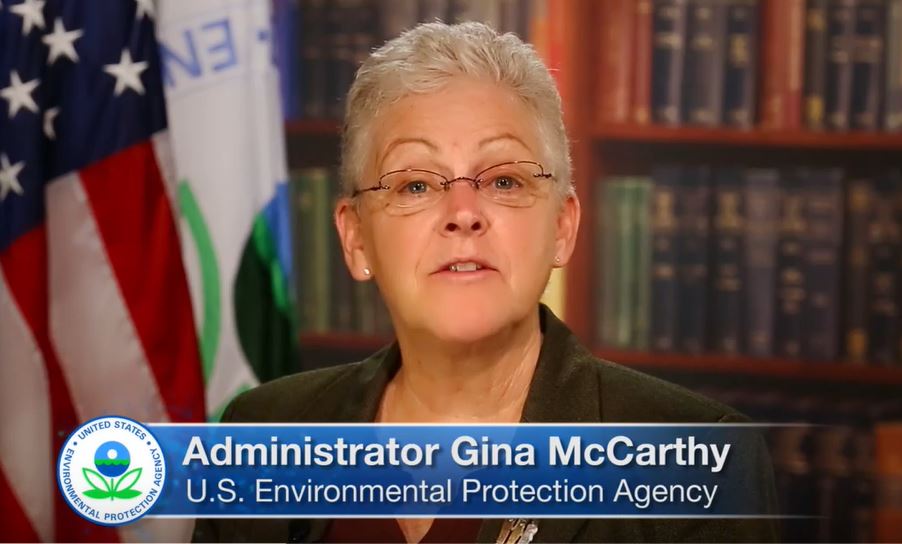A landmark June 30 Supreme Court ruling in favor of plaintiff states in West Virginia v. EPA will have enormously profound and far-reaching separation of powers implications limiting de facto lawmaking powers of executive branch-controlled regulatory agencies.
Whereas certain special interest groups are vehemently criticizing the court’s 6-3 vote determination as “anti-environmental,” this is a grossly unfair mischaracterization of deliberative substance.
Rather, the majority ruling was founded on a central constitutional principle that Congress alone has legislative authority to decide major policy issues with sweeping impacts.
A related legal “Major Question Doctrine” (MOD) holds that federal agencies must point to clear authorization from Congress before exercising new significant and transformative regulatory powers.
The controversy that gave rise to this case and decision can readily be traced back to a war on coal agenda clearly articulated by then-Democrat presidential candidate Barack Obama during a 2008 interview with the San Francisco Chronicle’s editorial board: “So if somebody wants to build a coal-powered plant, they can; it’s just that it will bankrupt them, because they’re going to be charged a huge sum for all that greenhouse gas that’s being emitted.”
That promise was echoed by then-presidential nominee Hillary Clinton, who also pledged that, “We’re going to put a lot of coal miners and coal companies out of business.”
The subsequent Obama-Biden administration, including Clinton as secretary of state, accomplished great progress toward that goal under the auspices of its congressionally approved Clean Air Act declaring CO2 plant food a climate “pollutant.”
Although the 2015 Obama “Clean Power Plan” (CPP) that would have required states to reduce CO2 emissions from generation of electricity primarily by forcing them to shift away from coal-fired plants never took effect, regulatory pressures were nevertheless very successful.
The U.S. coal industry lost 50,000 jobs during Obama’s first term, and another 33,000 during his second…about 11,000 in his last year alone.
By the end of Obama’s presidency, at least 400 coal mines had been shuttered.
Although the Supreme Court had blocked CPP implementation in 2016 by a 5-4 vote, the legal fight continued. After Donald Trump took office, and his EPA repealed the Obama-era plan altogether, 22 mainly Democrat states, the District of Columbia, and some of the nation’s largest cities sued back for its regulatory reintroduction.
In the recent West Virginia case joined by 18 mostly Republican-led states and coal companies, the Supreme Court ruled that CPP exceeded the authority Congress granted to EPA in the Clean Air Act which had been broadly interpreted by the agency as allowing a “beyond the fence line” approach.
Removing the original “inside the fence line” limit essentially allows EPA to fashion any “system” it chooses, leaving every energy production and user industry vulnerable to periodic politically directed White House whims which preferentially dictate winners and losers
This overreach would have allowed EPA to set standards that are impossible to meet at coal-fired plants, using a national cap-and-trade program covering all electricity production, grid management, and consumer use.
If allowed, EPA’s Clean Air Act would have been transformed to enable the agency to impose regulations cloaked as “environmental protection” that put them unaccountably in charge of our nation’s entire energy industry.
To be clear, the June 30 SCOTUS decision does not reverse the court’s earlier ruling authorizing EPA to regulate greenhouse gases — primarily interpreted to mean CO2 emissions — as “air pollutants” under the Clean Air Act.
According to the ruling written by Chief Justice John Roberts: “…the only interpretive question before us, and the only one we answer, is more narrow; whether the ‘best system of emission reduction’ identified by EPA in the Clean Power Plan was within the authority granted to the Agency in Section 111(d) of the Clean Air Act. For the reasons given, the answer is no.”
Chief Justice Roberts’ opinion stated that while “capping carbon dioxide emissions at a level that will force nationwide transition away from the use of coal to generate electricity may be a sensible ‘solution to the crisis of the day,”’ the Clean Air Act nevertheless doesn’t give EPA the authority to do so.
“A decision of such magnitude and consequence rests with Congress itself, or an agency acting pursuant to a clear delegation from that representative body,” he wrote.
The West Virginia v. EPA ruling comes at a particularly critical time when the current Biden administration is routinely using federal agencies under its control to unilaterally usurp and/or ignore congressional powers and authority in other major policy arenas.
Examples include Homeland Security’s transparently open illegal migrant southern border policy, Department of Interior withholdings of federal oil and gas leases and permits, and the January Supreme Court blockage of an OSHA COVID vaccine-or-test rule for employees of large private companies.
The West Virginia ruling should not, however, be viewed as exclusively a conservative victory. Looking forward, American democracy is a sure winner.
Let’s credit some wise advice from Justice Stephen Breyer, a Bill Clinton nominee generally associated with the liberal wing of the court who is retiring this very same day on June 30.
In his book “The Authority of the Court and the Peril of Politics” (2021), Justice Breyer wrote: “The accumulation of powers, legislative, executive, and judiciary, in the same hands, whether of one or many, and whether hereditary, self-appointed, or elective, may justly be pronounced the very definition of tyranny.”
This article originally appeared at NewsMax
